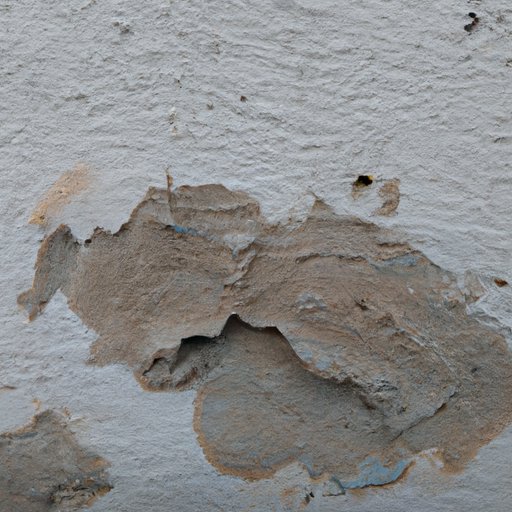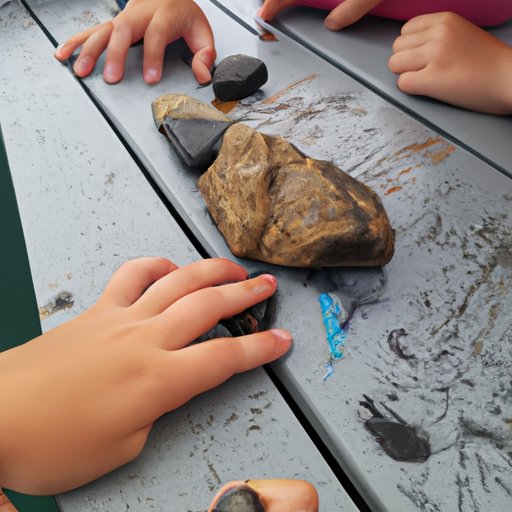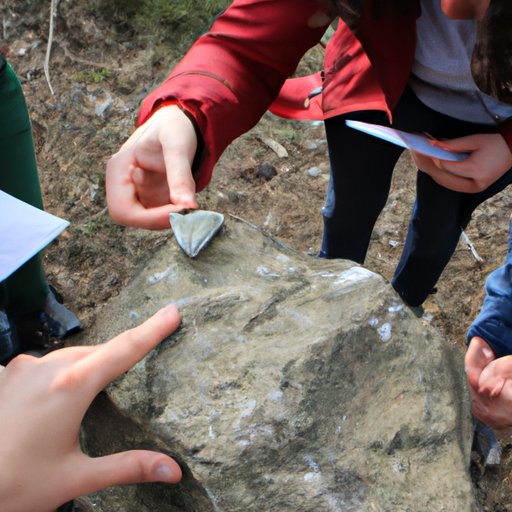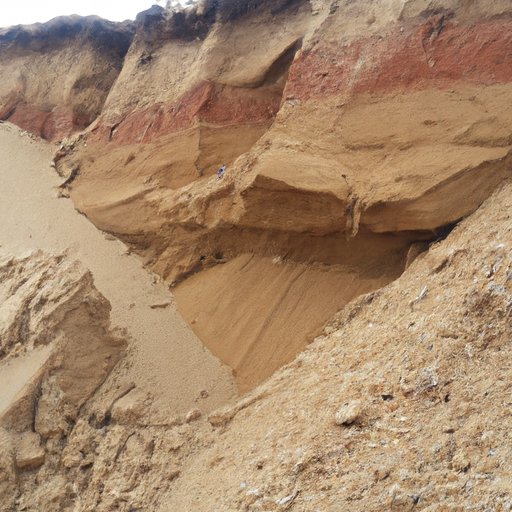Introduction
Weathering is a term used to describe the gradual breakdown of rocks and other materials due to exposure to various elements. It is a natural process that occurs over time and can be caused by a variety of factors such as wind, rain, temperature changes, and biological activity. In science, the term weathering is used to refer to the physical and chemical processes that cause rocks and other materials to break down into smaller pieces over time.
This article will explore what weathering means in science, its environmental implications, and how it relates to erosion and soil formation. We will examine the various types of weathering, how they impact the environment, and their role in the formation of soils.

Explain the Process of Weathering in Simple Terms
Weathering is a natural process that occurs over time as rocks and other materials are exposed to different elements. The most common type of weathering is known as mechanical weathering, which occurs when rocks are broken down into smaller pieces due to physical forces such as wind, rain, ice, and temperature changes. Chemical weathering occurs when rocks are dissolved or altered due to chemical reactions with water and other substances.
Erosion is another term commonly used in the context of weathering. Erosion occurs when rocks and other materials are moved or transported away from their original location due to the action of wind, water, or ice. While both weathering and erosion involve the breaking down of rocks, they differ in the way they affect the environment. Weathering breaks down rocks and other materials into smaller pieces without moving them, while erosion involves the movement of rocks and other materials away from their original location.
How Does Weathering Impact the Environment?
Weathering has a wide range of impacts on the environment. On a geological level, weathering can cause landforms to change shape over time due to the breakdown of rocks and other materials. Weathering also affects the composition of soils, as it breaks down rocks and minerals into smaller particles which can then be absorbed by plants and animals. Furthermore, weathering can have an effect on water quality, as it increases the amount of sediment in rivers and streams which can lead to decreased water clarity.

Investigating the Different Types of Weathering
There are two main types of weathering: physical weathering and chemical weathering. Physical weathering is caused by physical forces such as wind, rain, ice, and temperature changes. These forces cause rocks to break down into smaller pieces without changing their chemical composition. Chemical weathering occurs when rocks are dissolved or altered due to chemical reactions with water and other substances.

Examining the Effects of Physical and Chemical Weathering on Rocks
Physical weathering processes include abrasion, which occurs when rocks are broken down by friction; frost wedging, which occurs when water seeps into cracks in rocks and freezes, causing them to expand and break apart; and thermal expansion, which occurs when rocks are heated and cooled repeatedly, causing them to crack. Chemical weathering processes include oxidation, which occurs when oxygen reacts with iron in rocks and causes them to rust; hydrolysis, which occurs when water reacts with minerals in rocks and causes them to dissolve; and carbonation, which occurs when carbon dioxide reacts with calcium carbonate in rocks and causes them to dissolve.
The Role of Weathering in the Formation of Soils
Weathering plays an important role in the formation of soils. As rocks and minerals are broken down by physical and chemical weathering processes, they become smaller particles which can be absorbed by plants and animals. This helps to create fertile soils which are essential for plant growth. Weathering is also important in the nutrient cycle, as it releases essential nutrients such as nitrogen, phosphorus, and potassium which are necessary for plant growth.
Conclusion
In conclusion, weathering is a natural process that occurs over time as rocks and other materials are broken down due to physical and chemical forces. It has a wide range of impacts on the environment, including effects on geology, soil composition, and water quality. Additionally, weathering plays an important role in the formation of soils and the nutrient cycle. Further research is needed to understand the full implications of weathering and its effects on the environment.
(Note: Is this article not meeting your expectations? Do you have knowledge or insights to share? Unlock new opportunities and expand your reach by joining our authors team. Click Registration to join us and share your expertise with our readers.)
